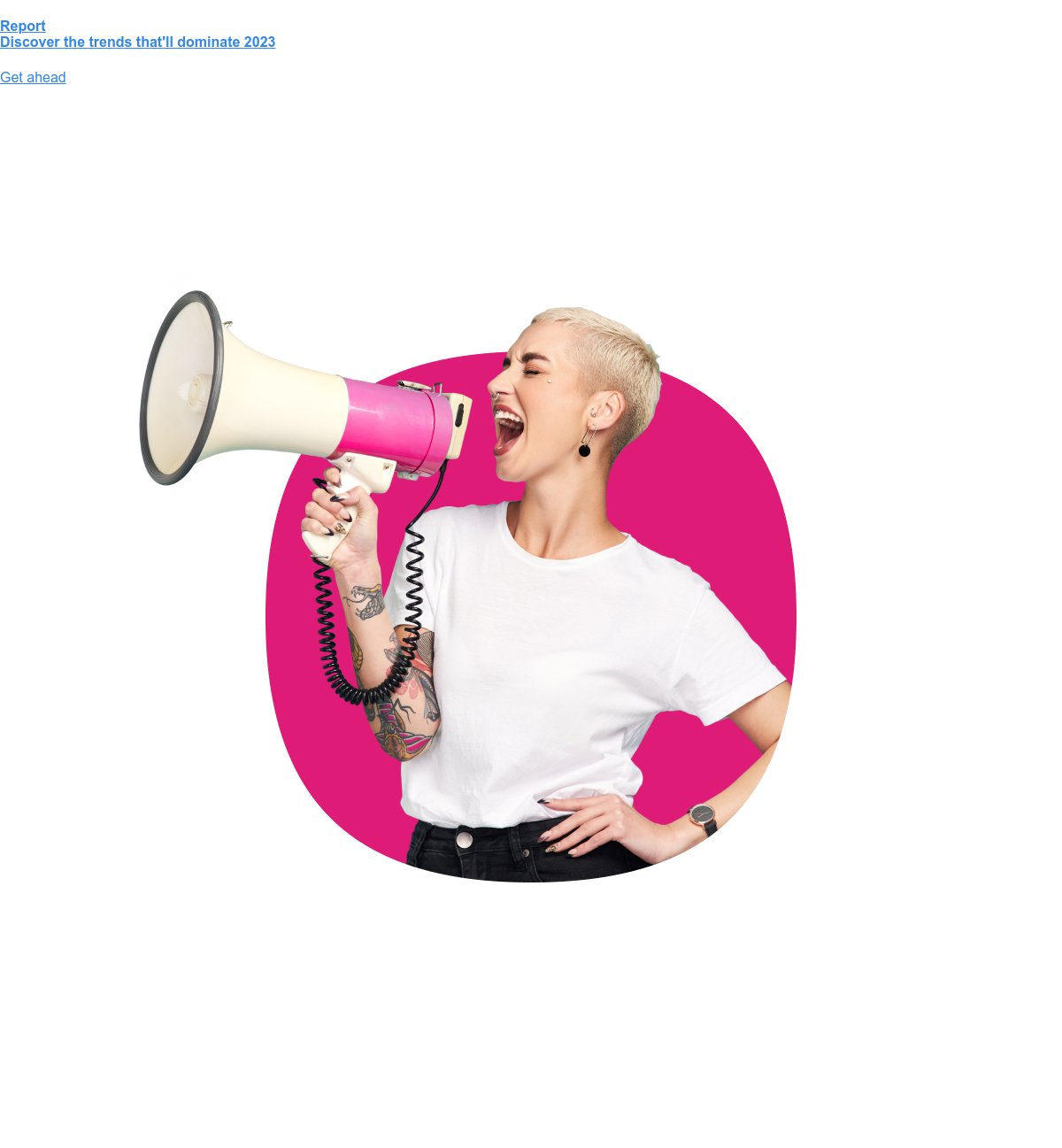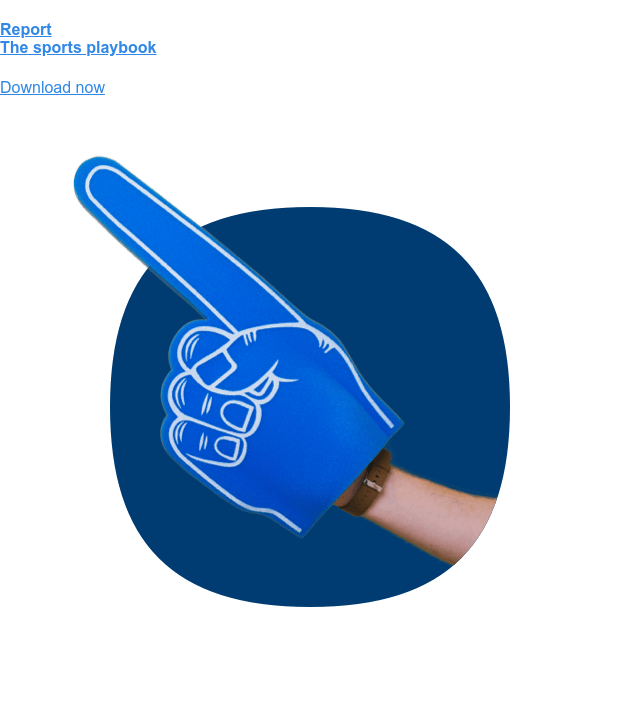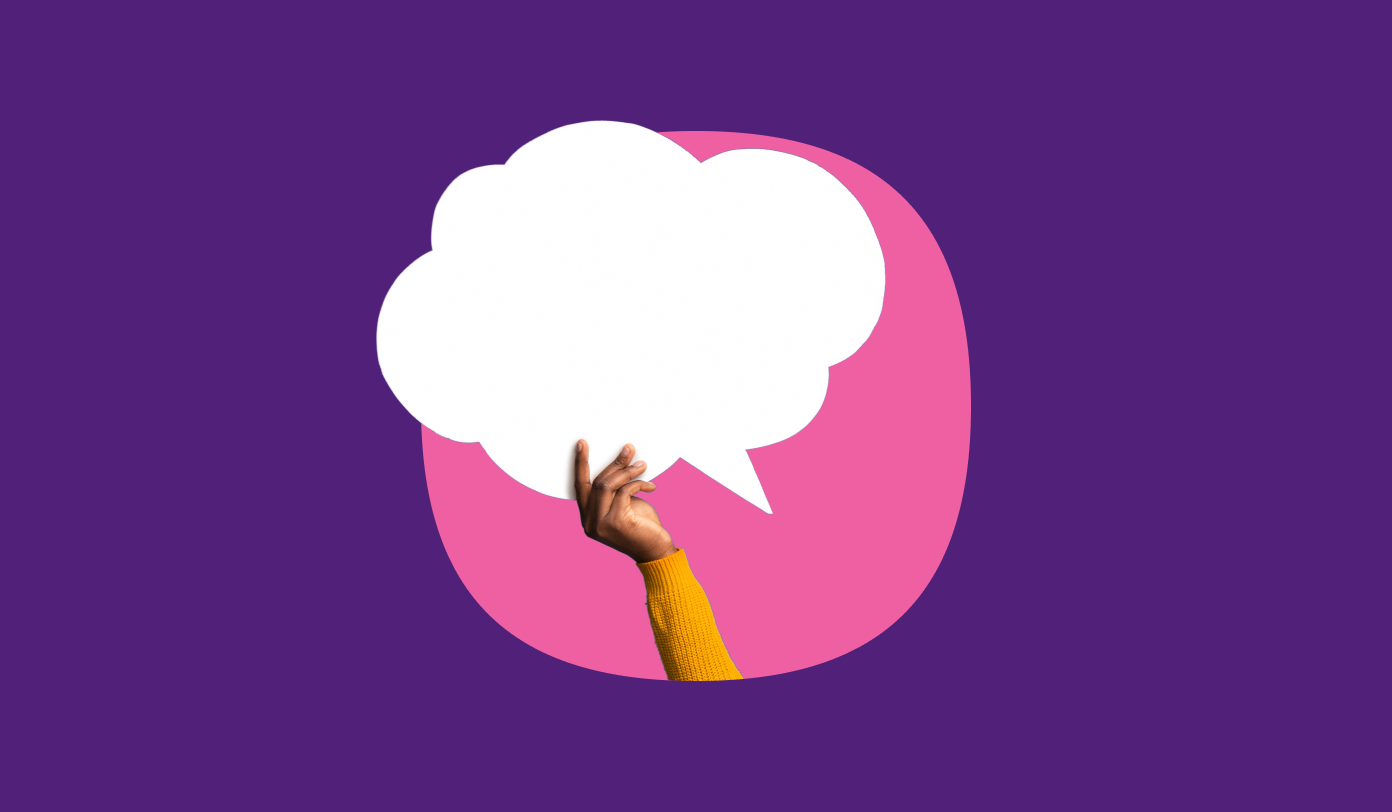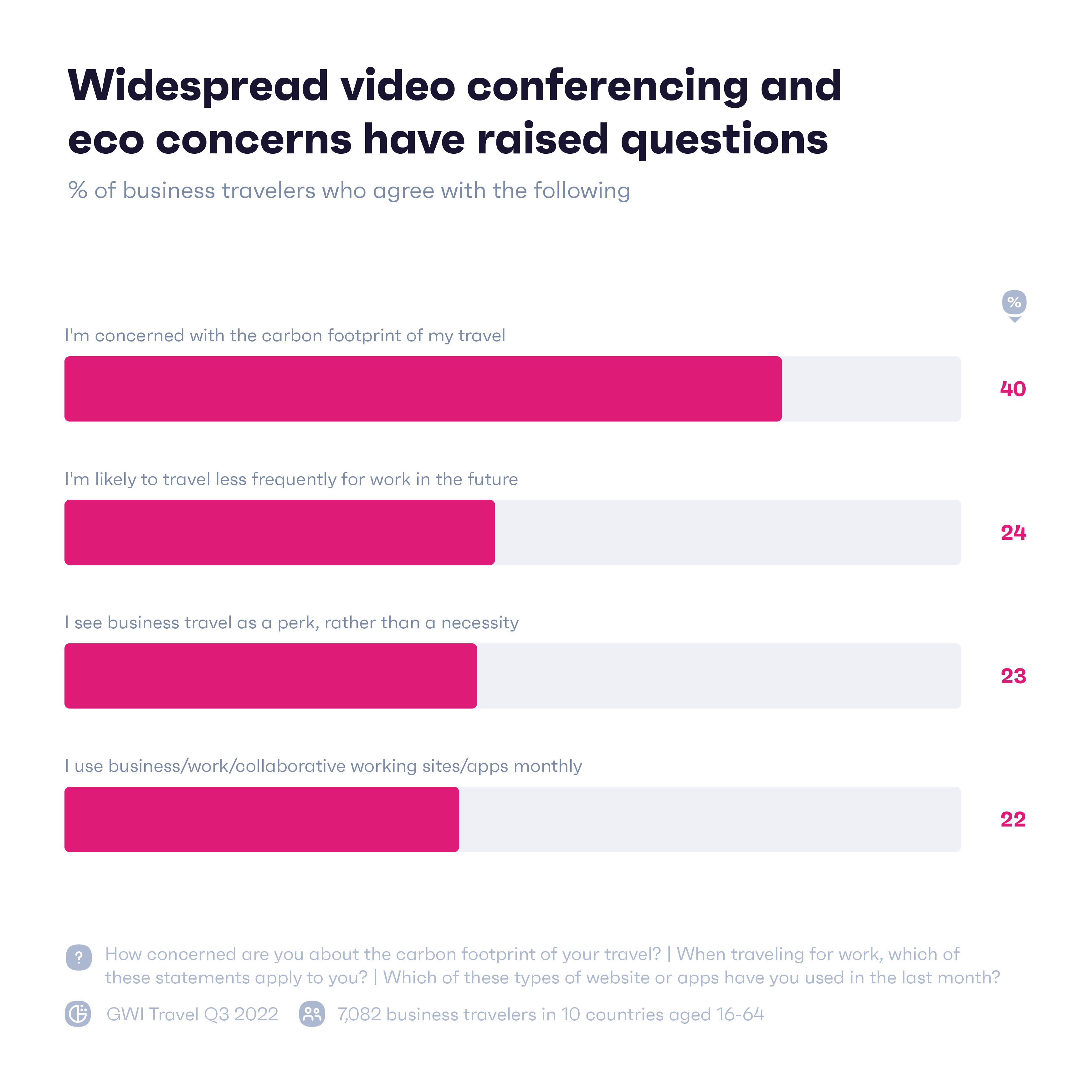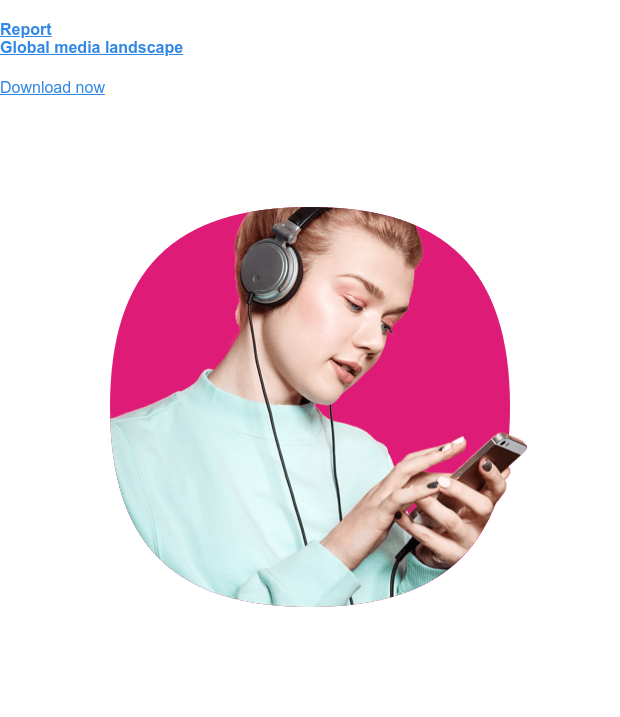
More data across more countries? We hear ya.
Did you know GWI now covers a whopping 50 markets worldwide? Norway and Chile are the latest countries to join our Core research. Velkommen, bienvenido.
To celebrate this huge milestone, we’ve collated some of the most weird and wonderful stats from across each of the markets we cover, where consumers in each country are the most (or least) likely to do or think something.
From self-tanning in Ireland and tennis in Chile, to Russian cats and drinking beer (not tequila) in Mexico, let’s explore the world one stat at a time.
1. Argentines are the most likely to listen to rock music
The biggest collection of Beatles memorabilia isn’t in Liverpool, London, or even Hamburg. It’s in Buenos Aires. The Fab Four never played here, but they kickstarted the country’s love affair with rock ‘n’ roll, culminating in the often subversive “Rock Nacional” movement.
2. Australia’s home to the most Aussie rules football viewers
Yeah… that isn’t unexpected, but Australia doesn’t stand out for too much on the global scale, except for drinking. They’re often near the top of the list for regular alcohol consumption, but as of our latest research wave they’ve been pipped to the post by the Brits.
3. Austrians are the most keen on declining cookies
Like its European neighbors, Austria was early to legislate on personal data, bringing in its first national data protection law in 1978. In late 2021, Austria was the first EU country whose Data Protection Agency found that Google Analytics was in breach of GDPR.
4. Belgians are the least likely to want 5G in their next phone
Belgian consumers aren’t very fussed about mobile tech on the whole. Out of all our markets, they’re the least likely to say their phone is their most important device.
5. Brazil’s consumers are most likely to be interested in beauty
Brazil’s warm weather and long beaches make looking good important, and it has one of the highest rates of plastic surgery in the world. The style of waxing named after the country was invented in a salon based in Manhattan, but owned by seven sisters from Brazil – whose names all began with the letter J.
6. Canadians are the most likely to think immigration is good for their country
Surveys have shown Canada is the country that residents of other countries most want to move to. And with good reason, when Canadians are so welcoming of new arrivals.
7. Consumers in Chile are the most inclined to watch tennis in person
Chile has a surprising tennis pedigree – in fact, the country’s only Olympic gold medals both came in tennis, in the same year (2004).
8. China’s consumers hold first place for buying organic fruit and veg online
What do you think of when you hear the word “streamer”? You might think of someone who plays games live on Twitch, but in China many farmers have jumped on the streaming trend, and also sell their wares through apps like Taobao Live.
9. Colombians are the most likely to drink rum
Colombia faces the Caribbean sea, so it’s easy for Colombians to get their hands on the stuff. Torta Negra (“black cake”) is a local delicacy, a fruit cake made with rum and wine. Food origin stories are often unreliable, but it’s said to have been imported by Welsh settlers to Patagonia in the 19th century (with rum presumably added by the locals).
10. Consumers in the Czech Republic are most inclined to buy cheese
An intriguing one, this – the Czech Republic isn’t known for producing that much of it. One of the most well-known Czech cheeses is Olomoucké tvarůžky – a cheese so pungent, it’s sometimes served with mints.
11. Danes are the most likely to listen to noughties music
A good decade for Danish music, to be fair. In 2000 the Olsen Brothers secured the country’s first Eurovision win in 37 years with “Fly on the Wings of Love”, while Alphabeat’s “Fascination” was a massive hit throughout Europe in the summer of 2006.
12. Egyptians are the most likely to support Liverpool FC
If you know about football, you’ll know that Mo Salah is a big deal. And he’s such a star in his home country that fans will follow him wherever he goes. In early 2017 more Egyptians actually supported Roma – but once he transferred from Roma to the Reds, their loyalties moved with him.
13. French consumers are really into rural living
French consumers are the most likely to live rurally. This data is based on how respondents interpret where they live, not their address – so perception is important. And it makes sense for French consumers to identify with a rural location – “la France profonde” is the concept that there’s a deep sense of French national identity that can only be found outside cities.
14. Germany tops the list for hairspray users
Germany has an older population compared to most of our tracked markets, and older consumers tend to prefer spray over other haircare products. A German company (Schwarzkopf) also claims to have invented hairspray when it launched Taft in 1955, which could have something to do with it.
15. Ghana’s consumers are the least inclined to order groceries online
Ecommerce penetration is low in parts of Africa. One reason is that good internet coverage can be hard to come across, while another is a close attachment to buying from informal open-air markets (Ghana’s Kumasi Central Market is said to be the largest in West Africa). As we’ve seen in many places though, Covid has changed things.
16. Greek consumers are the most likely to be on Viber
What’s Viber? It’s an instant messaging and voice over IP app, similar to WhatsApp and LINE. Why is it so popular in Greece? Although it’s owned by Japanese company Rakuten, and was founded by Israeli developers, it’s actually based in Cyprus, a neighboring country with which it shares deep cultural ties.
17. Hongkongers are most keen on dining out at restaurants and fast food joints
Hong Kong is an extremely densely-populated region, with many residents not having access to a kitchen or room to cook. Takeout food from hawker markets presents an affordable alternative, while its impressive selection of Michelin star restaurants tempt diners at the top end.
18. India has the most cricket spectators
That one probably didn’t surprise you. But interestingly, cricket isn’t the most popular sport in India – it’s actually football/soccer. Keep that nugget of insight in your back pocket.
19. Consumers in Indonesia have the strongest tendency to drink iced tea
This isn’t iced tea as you might know it. Jasmine is the national flower of Indonesia, and sweetened cold jasmine tea is hugely popular. So much so that the leading brands are more popular than Pepsi or Coca-Cola – making Indonesia one of just three markets in our research where one of the American giants isn’t the market leader for soft drinks.
20. Irish women are the most likely to wear self-tan products
Thanks to the quirks of genetic mutation and migration of people, Irish people have the fairest complexions in the world. With that in mind, it’s easy to see why Irish ladies are stocking up on bronzing goodies for a sunkissed glow.
21. Israel’s consumers are most likely to support the Washington Wizards
The Washington Wizards are an NBA team – the one Michael Jordan ended his career with in the early 2000s. So why do they have so many followers in Israel? Say hello to Deni Avdija, an Israeli-Serbian small forward who’s been part of their roster since 2020.
22. Italians are the most into singer-songwriters
The Italians have their own special word for a singer-songwriter, with its own distinctive tradition: cantautori. Probably the best-known song from said tradition is “Volare”, released in 1958 and still the only song to win both Eurovision and a Grammy.
23. Japanese consumers are the most likely to say Twitter is their favorite social media platform
Two main reasons for this. One, Japanese culture prizes anonymity online when the concept of saving face is all-important, and it’s easier to be anonymous on Twitter. Second, using kanji (the characters that form Japanese writing) lets you communicate much more in 280 characters than you can in English.
24. Kenyans are the most likely to pay for music downloads
Data is relatively expensive in parts of Africa and endless streaming isn’t an option for many. Kenya-based platform Mdundo gears its service to downloads of tracks, rather than streaming, for exactly this reason.
25. Malaysia takes pole position for watching motorsports in person
Malaysia’s royal families have helped make motor racing popular. The son of one of the country’s Sultans drives in the Australian GT Championship, while the same Sultan’s grandfather instigated the country’s first Grand Prix in 1940.
26. Mexicans are the most disposed to beer drinking
At different points in its history cerveza has been cemented in Mexican culture. It was first brought over by the Spanish, boosted by German immigrants, and then given another lift when Prohibition in the US created demand for Mexican brewers.
27. Moroccans are the most likely to say that Clubhouse is their favorite social media platform
There could be a couple of reasons why Clubhouse is more popular in Morocco. As an Arab-majority country, voice is an important way to communicate, as texting can’t always account for the diversity of Arabic dialects. It may also provide a space to discuss topics that aren’t appropriate for other social platforms.
28. Consumers in the Netherlands are the biggest fans of pop music
Five-time winners of the Eurovision Song Contest, the Dutch have a penchant for pop. Pinkpop, an annual festival held in the municipality of Landgraaf, is the oldest continuously running rock and pop music festival in the world.
29. New Zealanders care the most about helping others before themselves
Far from the rest of the world and its class systems, New Zealand has attracted utopian dreamers ever since the first European settlers arrived. This has persisted in the country’s distinctive egalitarianism – sometimes cited as a reason why its Covid-19 response was so successful.
30. Nigeria’s consumers are most likely to discover brands through billboards and posters
And amazingly, this was before the world’s largest billboard was activated on the Third Mainland Bridge in Lagos. It’s a smart location – Lagos’s geography means many commuters drive over it when traveling from their homes on the mainland to their offices on Lagos Island. That’s a lot of eyeballs to get in front of.
31. Norwegians are the biggest fans of electric cars
Norway might be one of the biggest natural gas exporters in the world, but it’s also a trailblazer in adopting electric vehicles. In 1990 the government made EVs exempt from a costly vehicle purchase tax, and a few years later – thanks to a protest led by the lead singer of A-ha – made them exempt from road tolls as well.
32. The Philippines leads the way in following social media influencers
Filipino history has been described as three hundred years in a convent followed by fifty in Hollywood. And its distinctive celebrity culture might have something to do with Catholic icons coming head-on with the star power of American media. Fans of film star Nora Aunor call themselves “Noranians”, a kind of precursor to Swifties and Beliebers.
33. Poland’s consumers care most about being anonymous online
Poland is distinguished even among Eastern European countries in its opposition to online censorship. Protests in the country, where members of parliament wore Guy Fawkes masks, were instrumental in ensuring the Anti-Counterfeiting Trade Agreement (a multilateral treaty some felt would bring about internet censorship) didn’t come into force.
34. Consumers in Portugal are the most likely to buy wine
Portugal is like most of the Mediterranean in having a taste for the grape – but it’s played an important part in its recent history too. Wine production was a pillar of Antonio Salazar’s “New State” program, leading him to say “drinking wine helps to feed one million Portuguese inhabitants”.
35. Romanians are the most into watching gymnastics on TV
We may have Nadia Comăneci to thank for this one. She was the first gymnast to score a perfect 10 at the Olympics, which she achieved while representing Romania at the 1976 Games.
36. Russian consumers are the most likely to own a cat
Some cultures think cats are bad luck, but in Russia felines are so valued that the Hermitage Museum in St. Petersburg has dozens of them, taking care of rodents and generally living their best lives.
37. Saudi Arabia’s the home of horse racing fans
For the desert tribes that first populated the Arabian peninsula, horses were vital for moving around the tough landscape, and a love of horses has persisted in the region. Did you know that all Thoroughbred horses can be traced back to just three stallions, two of them Arabian?
38. Singapore has the highest proportion of managers
Lee Kuan Yew, the long-serving Prime Minister of Singapore, said his country’s only resource was its people. The country has historically invested heavily in educating, training, and developing its citizens, which has allowed them to become business leaders. It’s also an important hub in the Asia Pacific region, so regional leads are often based there.
39. South Africans are the most likely to be into hip-hop/rap
As journalist Attiyah Khan puts it, there’s long been a crossover between the black communities in South Africa and America in using music as a form of social protest, stretching back to the early years of jazz. Hip-hop has done similar, but has also created a distinctive local genre, kwaito, which fuses it with elements of house music.
40. South Korea’s first in line for discount codes
We’re not entirely sure why South Korea are the world leaders for this one – but it could be something to do with Culture Day. On the last Wednesday of the month cultural facilities and museums offer free and discounted entry – just as long as you remember your coupon.
41. Spain’s consumers take first place for owning an e-reader
Spanish is spoken by almost 8% of the world’s population, making it a big market for books, whether physical or digital. The home country of Cervantes may have actually produced the first prototype ebook reader all the way back in 1949, when schoolteacher Angela Ruiz Robles patented her “mechanical encyclopedia”.
42. Swedes are the most likely to work in a nursery
Sweden’s child care system is widely considered to be one of the best in the world. Facing a labor shortage in the 1960s, the Swedish government created a National Commission on Child Care, and its resultant preschool reforms allowed more mothers to enter the workplace.
43. The Swiss are the biggest fans of LinkedIn
The Swiss are the most likely to say LinkedIn is their fave social media platform, and their affection for it may have something to do with the country’s work ethic. It’s a common trait in countries with few natural resources, whose economies are reliant on services. There’s probably also an influence from Jean Calvin, the austere Protestant theologian who did most of his work in Geneva.
44. Consumers in Taiwan are the most likely to play baseball
That’s right – they’ve beaten the USA to first place. The Japanese introduced the sport to Taiwan, and one of the country’s most successful films, Kano, tells the story of the namesake underdog team taking part in the prestigious Japanese High School Baseball Championship.
45. Thailand’s consumers are the biggest fans of indie music
Thailand only gained its first modern independent record label in 1994, but it’s been making up for lost time since. The first Thai indie bands were inspired by alternative Western acts like Radiohead, but this has come full circle in recent years. Texan band Khruangbin have been vocal about the influence they take from Thai music.
46. Turkey’s got the taste for coffee
The word “coffee” comes from the Turkish “kahveh”, and the culture of drinking coffee is so established in the country that it’s recognized by UNESCO.
47. Consumers in the UAE are most likely to go to the cinema regularly
More than 60% of the UAE’s consumers are parents. That means a big audience of families looking for the child-friendly entertainment that cinemas provide (the air conditioning probably helps too).
48. The UK has the highest share of consumers who drink alcohol regularly
There’s a lot you could write about the UK’s love of booze. But it’s probably best summed up by the meme from 2004 film Shaun of the Dead that pops up in times of national crisis – “Go to the Winchester, have a nice cold pint, and wait for all this to blow over”.
49. Consumers in the USA are the least likely to take public transport regularly
It goes without saying that America is car-friendly. Our USA data set tells us Florida is the state where people are most likely to take public transport every day, while Hawaii is where they take it the least.
50. Vietnamese consumers are the most likely to own a motorbike
Vietnam’s narrow streets and hot climate have always made it well-suited to traveling by bike. Until the 1990s it was mainly the engineless variety, but increasing prosperity and openness to foreign imports allowed more consumers to splash out on a Honda or a Yamaha. 98% of internet users in the country own at least one motorcycle – the highest ownership rate for any vehicle in any country.
Hungry for more tasty insights from across all 50 markets? With access to the world’s biggest study on the online consumer, you can dive in for more hidden gems, insightful data, and market facts to help nail your next campaign. Be it in Chile, Norway, or any of the other 48 countries we survey.


